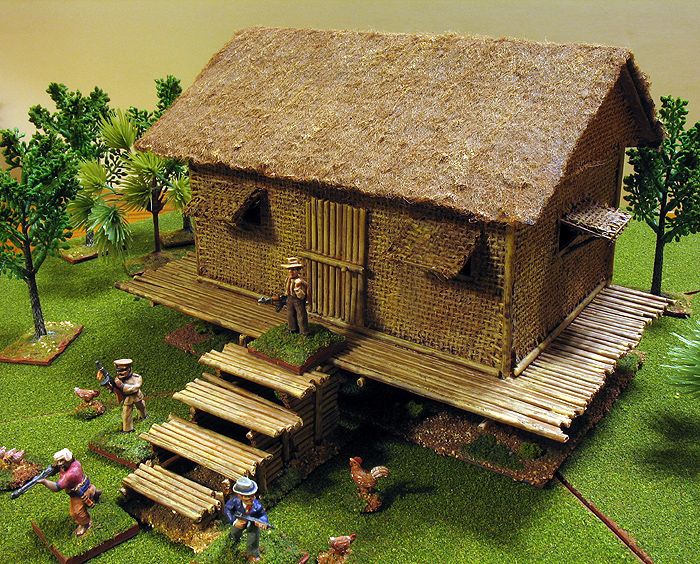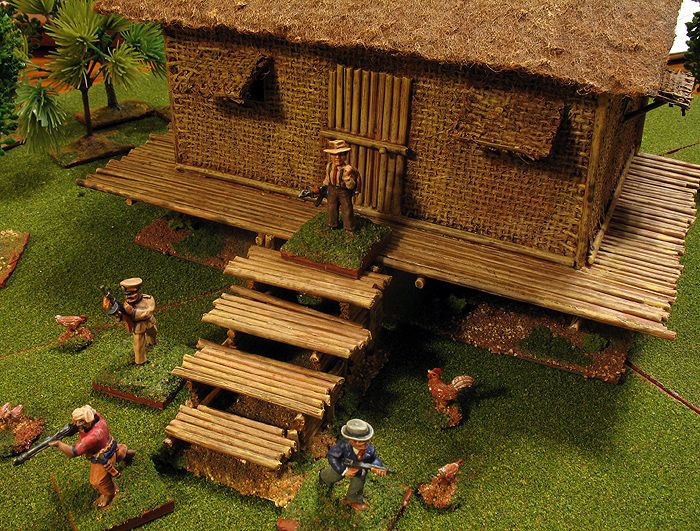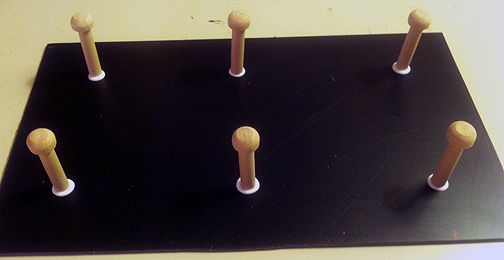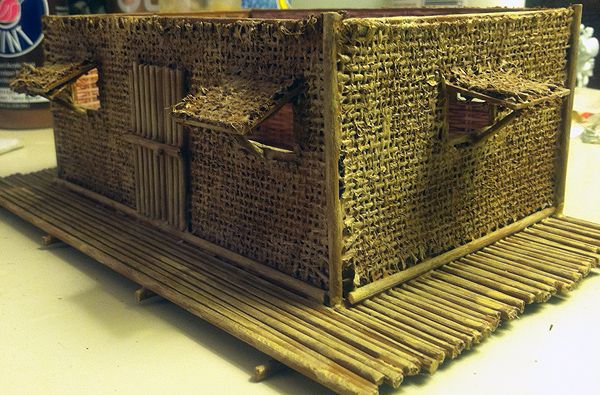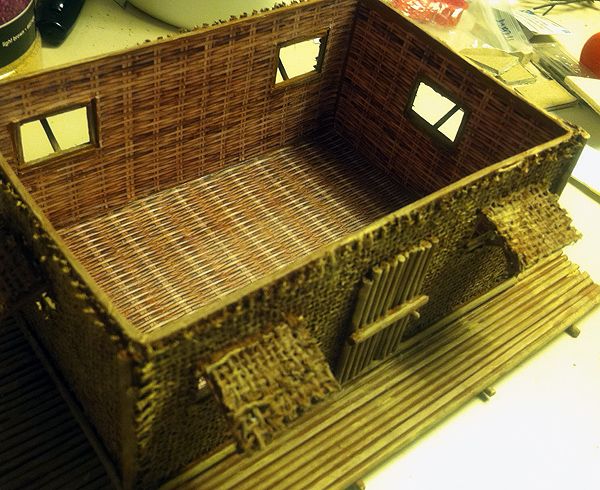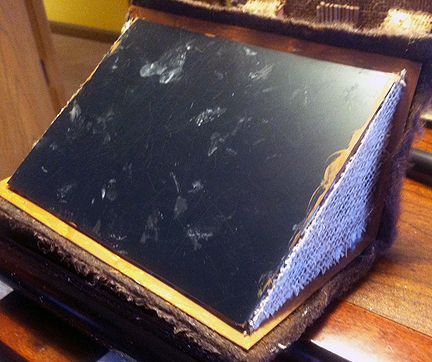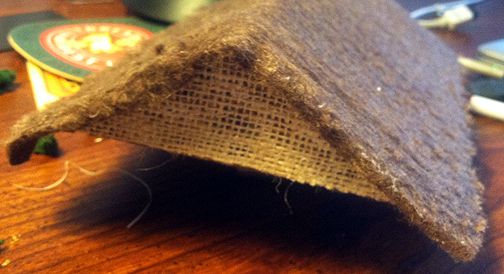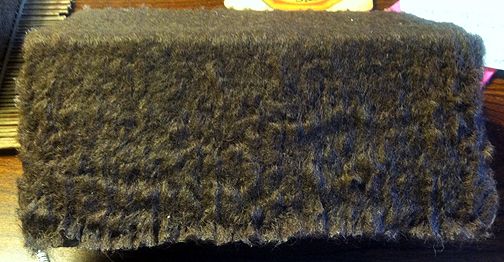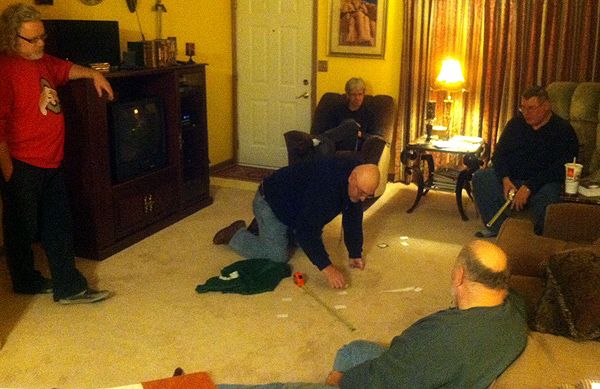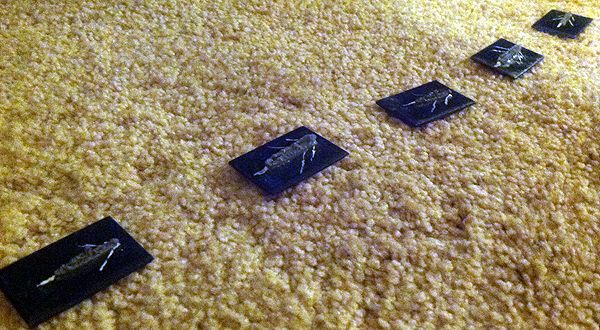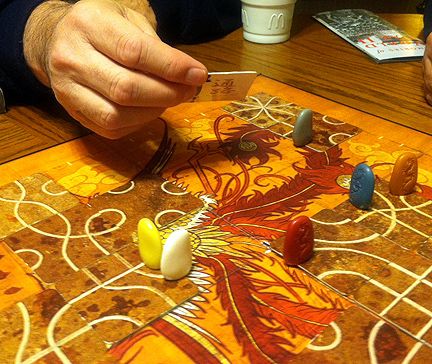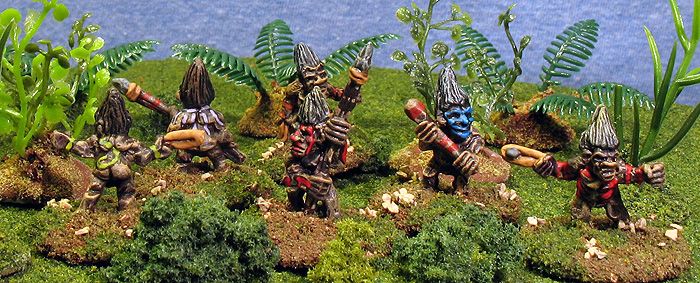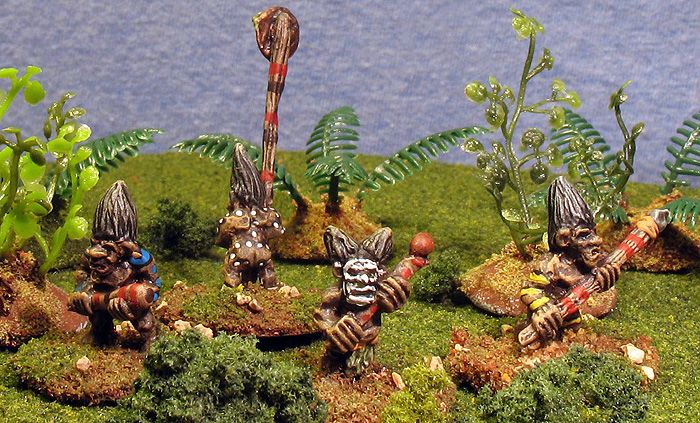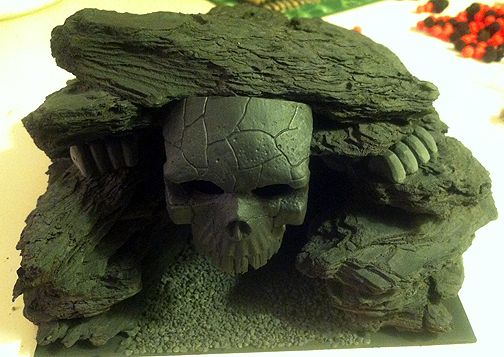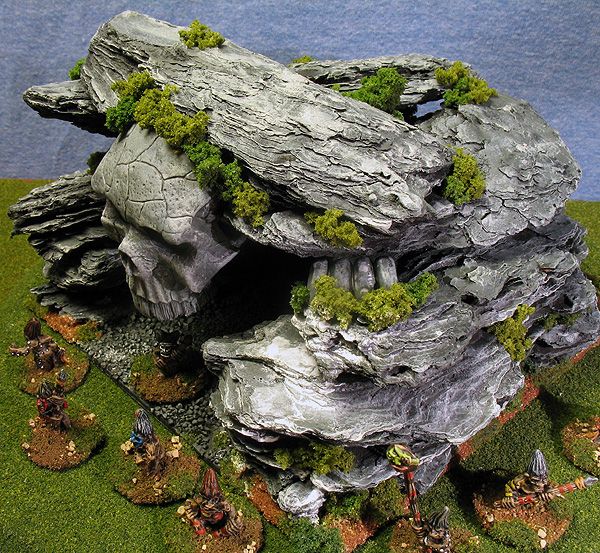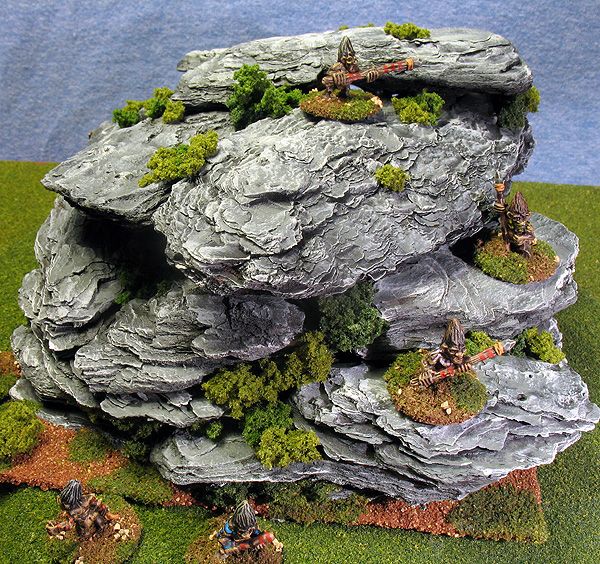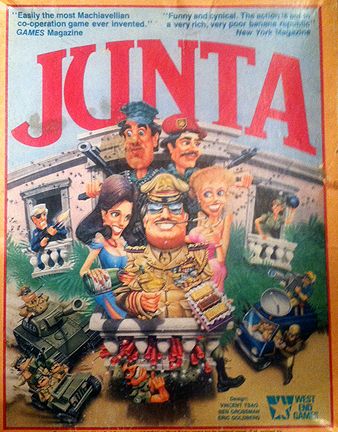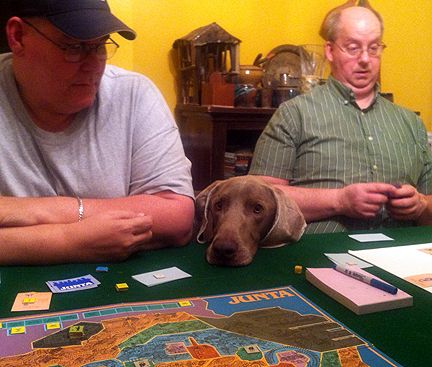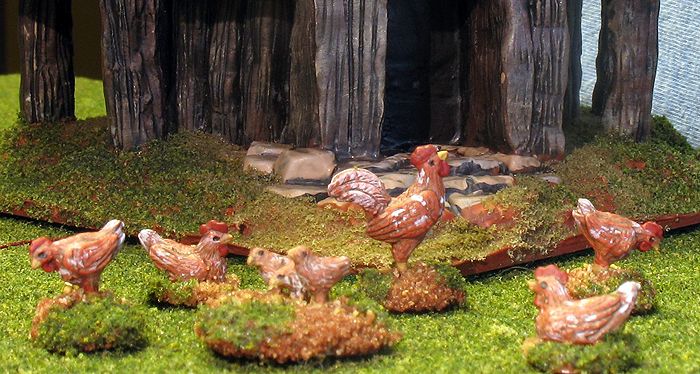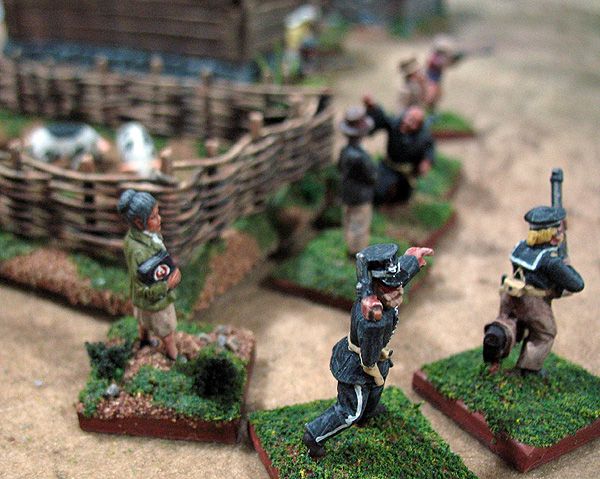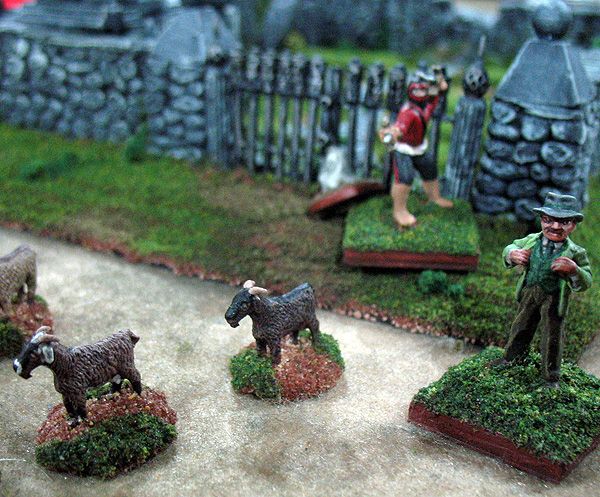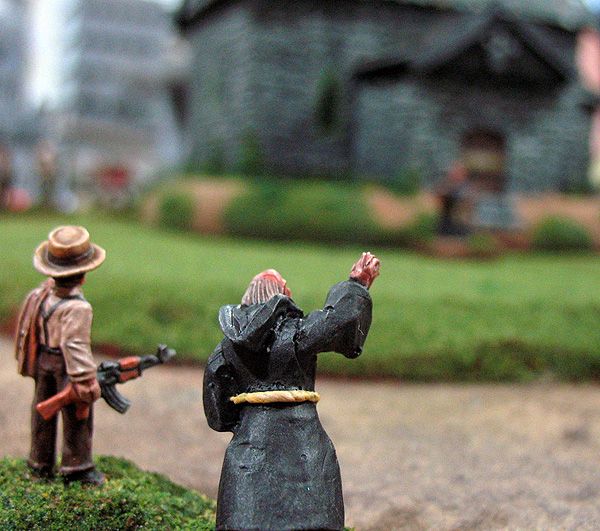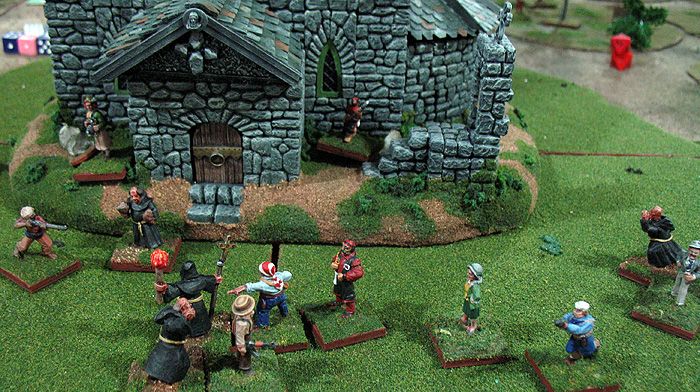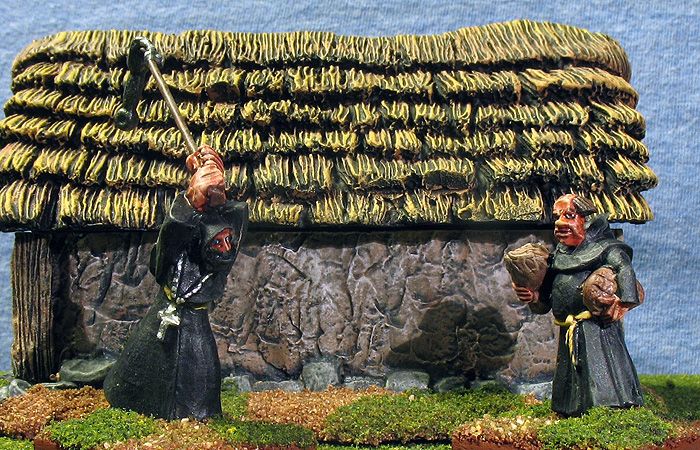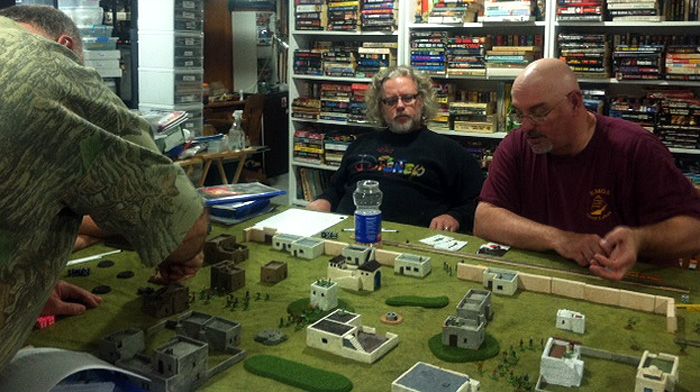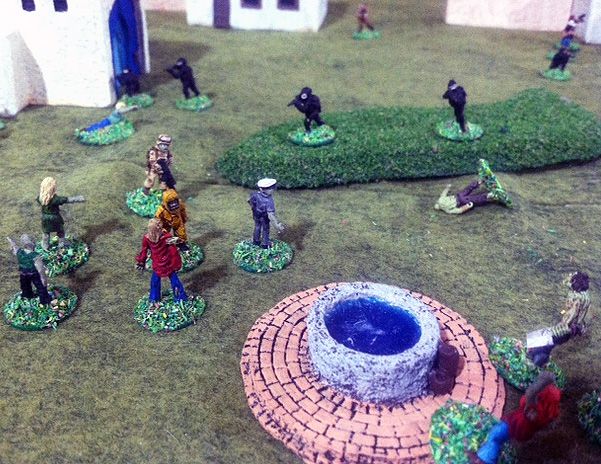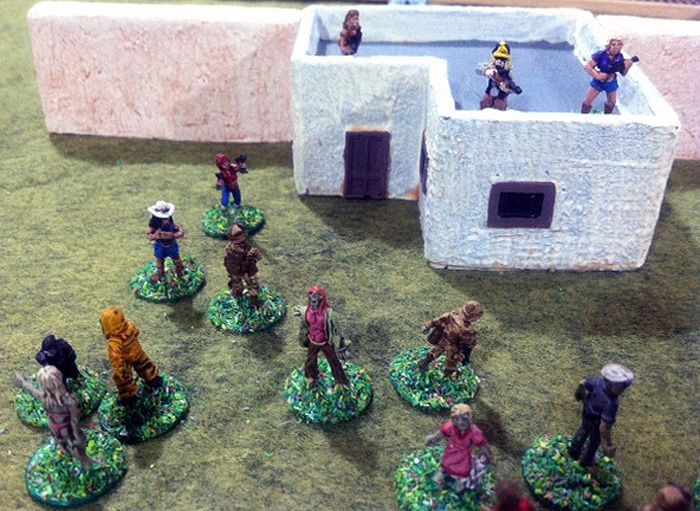I've had an Airfix 1/72 scale plastic "Jungle Outpost" for a number
of years, and been tempted several times to build it. Every time I pull
it out, I look at it and think, "Too small." Then a year goes by and I
pull it out again, hoping it has grown, I guess. No matter how long I
store it away in the closet, though, it never comes out big enough to
use for 28mm figures. Maybe I should sit out where it can get some
sunlight...
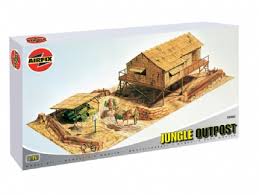 |
| The inspiration -- a too-smail piece of 1/72 scale terrain |
Seriously, I've been telling myself that as
soon as I find a likely material to simulate the wicker walls I'll just
go ahead and scratch-build a version of it. I love the way it is on
stilts and has a platform, thatch roof, and so on. It is intended for
the Vietnam War, but is a fairly timeless style of building. I was at
Michaels Craft store the other day, picking up plastic plants to use a
jungle pieces. So, I decided to cruise the aisles hoping for
inspiration. I spotted a roll of burlap and immediately went into
"Hmmm..." mode. The weave was too wide, so I kept looking until I found
some with a tighter weave. I picked it up, and then swung by the paper
mache boxes that I used for the Southeast Asian temples. They had a pack
of 3 of different sizes for less than $2 each, so I grabbed them, too.
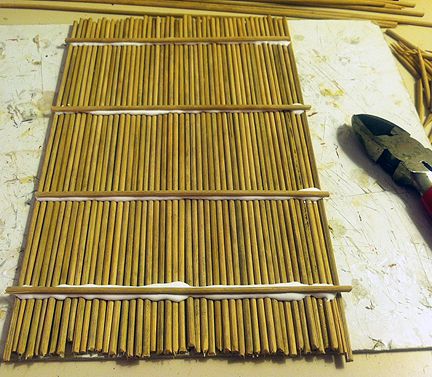 |
| The bamboo platform, made from bamboo skewers cut to length quickly with a wire cutter |
Once
home, I began to pull out different materials I'd need from my storage.
I had three packs of bamboo skewers that I knew would come in handy. I
mean, what better material for a jungle hut than bamboo? In particular,
it would make a great platform for the hut to sit on. So, that was the
first step. I decided to be smart and build just one hut on the first
go-around so I could see what works and what doesn't. I measured the
middle sized building, 5"x7". I wanted at least an inch of platform
space as a balcony. So, I grabbed a pack of bamboo skewers, the wire
cutters, and began trimming them up to size. Actually, there was a
strange, blackish powder all over the skewers, so I had to wash them
first and let the dry.
Once I had the right amount, I
bunched them tightly together and drew four lines of Tacky glue onto
them. I placed another bamboo piece across them atop each Tacky glue
line to bind them together. I was surprised they didn't shift much. Step
one, the platform, was a snap to create. I left it on the desk in the
spare bedroom to dry.
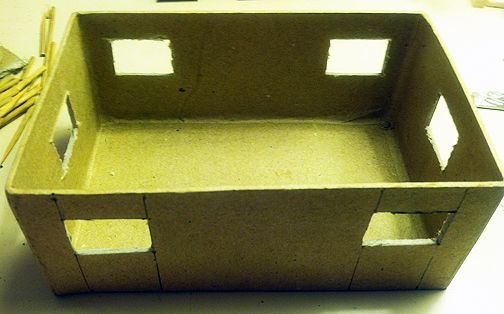 |
| The framework for the building -- a paper mache box from Michaels with holes cut out for the windows |
Next, I grabbed the box and a
ruler and measured out where I wanted the windows. I know it'd be easier
to make if I made them closed. Then all I would have to do would be to
glue the wicker shutter onto the wall. But this is southeast Asia! It is
too stinking hot to close the windows...plus Airfix's "Jungle Outpost"
showed propped open window shutters on the box's picture. I wanted
propped open shutters, too! So, once I'd measured each 1"x3/4" window, I
cut it out of the paper mache box with an Xacto knife. If I was smart,
I'd have grabbed a fresh, sharp blade...but see the above comment about
the windows and draw your own conclusion! Before long, I had two windows
on each of the long sides, and one each on the short side.
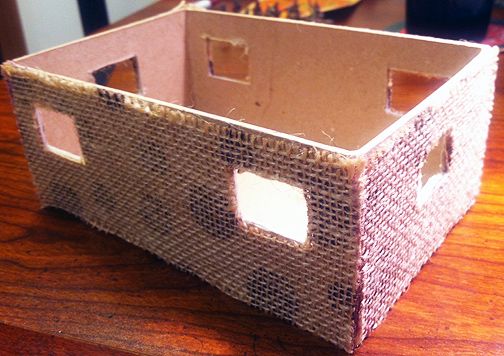 |
| The box covered with burlap from Michaels craft store (white glue works fine to attach it to the paper mache) |
The
next step was to see if my burlap inspiration was a good one or not. I
plopped the box down on the burlap, traced the outline in felt tip
marker, and then trimmed out each side. I smeared the surface of the box
with white glue and pressed the burlap onto it. Yes, I know what
you're thinking. "Hey, dimwit! You just covered up the windows!" Ha,
ha...I fooled you. I did that
on purpose! I figured it
would be easier, once the burlap was dry, to simply use an Xacto knife
again and trim off the burlap covering the window opening. Not to gloat,
but I was right (see...teach you to question me...). Later, I was to find out that I had just made my life a lot more difficult. I
should have painted the hut walls my base color first, before gluing on the burlap. It was quite the pain to get the base coat inside the weave of the fibers and fully cover the hut...!
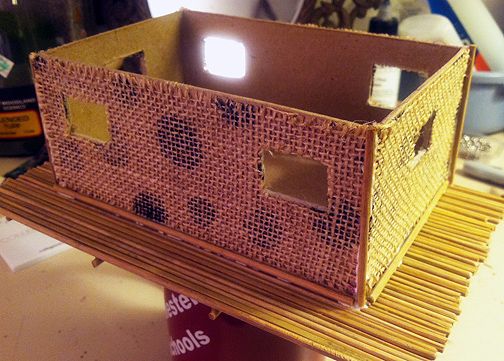 |
| The building affixed to the platform with Tacky glue. Note the
extra bamboo pieces at the base of the building and at each corner. |
Here is a picture of the building Tacky glued down to the platform. Those weird circles are actually part of the pattern that was on the burlap, so I glued them "face down" so I had the weave as the texture. As you can see, I glued down a piece of bamboo along the base of each side of the building, as well as on each corner wall. This gives it a nice framed appearance.
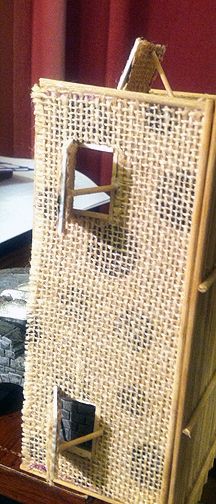 |
| The shutters -- probably the most "fiddly" part of the build. I
trimmed a "mini-dowel" to be the prop. Then I used tacky glue to attach
the shutter to the wall, and the prop to the shutter and wall. It was
left upright so gravity would keep it in place while the glue dried. |
Next up was the most fiddly part of the build -- the shutters. I trimmed a piece of thin styrene to the window size. I then cut two squares of burlap to that size, gluing one to the front side and the other to the back. Next, I cut some "mini-dowels" from the craft store to be props, holding the shutters open. I put a thick line of Tacky glue at the top of the window. I put a blob of glue on both ends of the prop. Then I placed the shutter against the line of glue, and wedged the prop between it and the window. I set it upright so gravity would hold it in place against the prop while the Tacky glue dried. I was really dreading this part, thinking my fumble fingers would make a mess of it. However, it worked like a charm, and after about 20-30 minutes drying time for each face of the building, I had six windows propped open just like in the Airfix building!
 |
| A top view of the stairs before painting |
Since the building was going to be sitting up on a platform, I would need stairs to lead up to it. I decided to use bamboo skewer pieces again. Rather than make a complicated framework, I decided to go with piled bamboo logs for the framework. I decided each level of the stairs would be 3 pieces tall. So, I made a pile of 3, 6, 9, and 12. They were attached by a simple bamboo "stake" or vertical piece Tacky glued onto them, as you can see in the picture above.
 |
| Side view of the "stacked logs" framework of the stairway. |
The next step was to assemble them into a stairway. I cut a piece of thin styrene for their base, and then simply Tacky glued each piece upright. Some needed propped by blue tack or other methods to stay upright, other stood on their own fairly well. As you can see in the side view photo above, the pieces alternated going inside then outside of the other. Once the framework was dry, I simply glued six more bamboo skewer pieces across the framework. Once done and painted it is a functional (if not architecturally beautiful) set of stairs. Since it is a jungle village piece, I figured the more crude the better -- and this stairway fits that description!
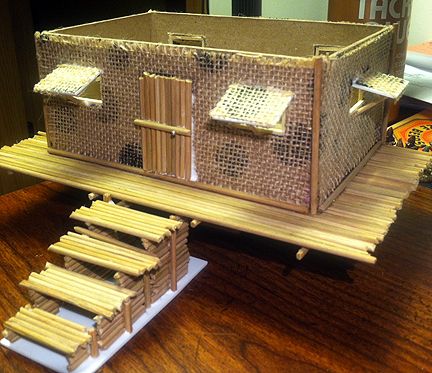 |
| The hut, platform and stairs, assembled and waiting for paint. I was to find out that I should have painted the hut BEFORE gluing on the burlap for the wall texture... |
Here's a shot of the building and stairway at this stage. I designed the end of the stairway to be slid under the platform...so hopefully I don't screw up the measurements! As you can see, I also made a door with bamboo pieces and glued it straight to the wall. The crossbar is another bamboo piece, with a hole drilled in it to insert a straight pin as the knob.
I have to say, I'm pretty happy with how it looks at this stage...!
